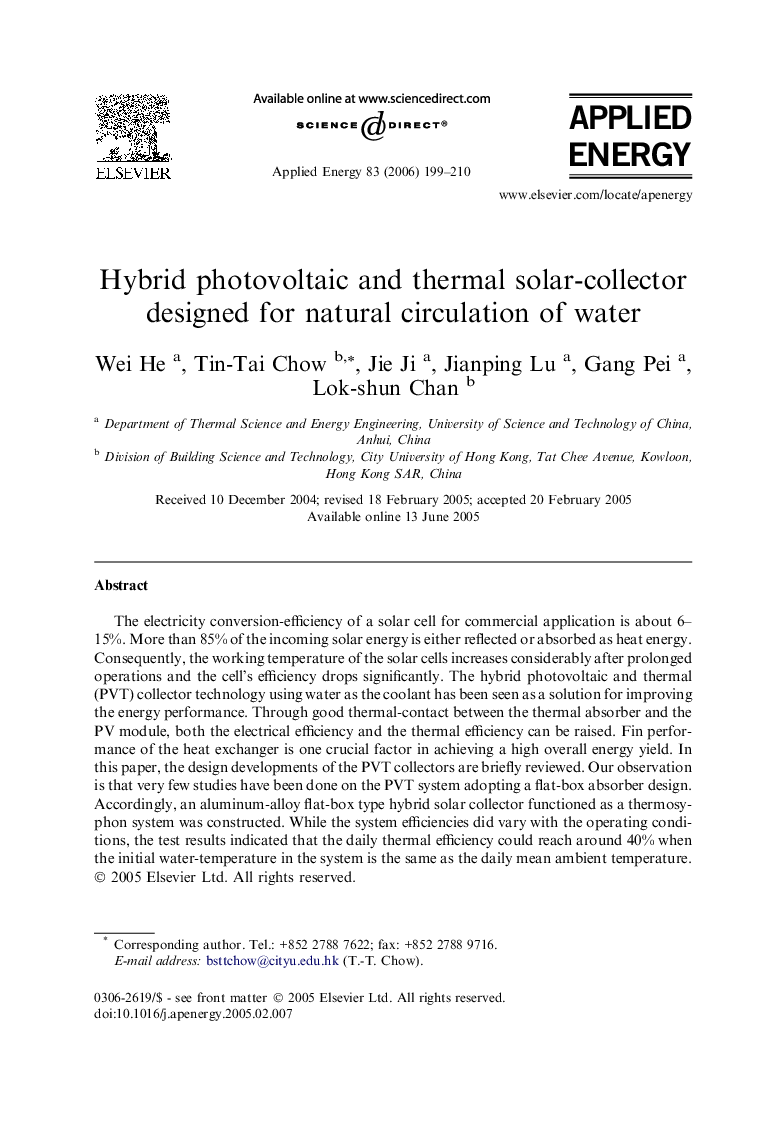| Article ID | Journal | Published Year | Pages | File Type |
|---|---|---|---|---|
| 245424 | Applied Energy | 2006 | 12 Pages |
The electricity conversion-efficiency of a solar cell for commercial application is about 6–15%. More than 85% of the incoming solar energy is either reflected or absorbed as heat energy. Consequently, the working temperature of the solar cells increases considerably after prolonged operations and the cell’s efficiency drops significantly. The hybrid photovoltaic and thermal (PVT) collector technology using water as the coolant has been seen as a solution for improving the energy performance. Through good thermal-contact between the thermal absorber and the PV module, both the electrical efficiency and the thermal efficiency can be raised. Fin performance of the heat exchanger is one crucial factor in achieving a high overall energy yield. In this paper, the design developments of the PVT collectors are briefly reviewed. Our observation is that very few studies have been done on the PVT system adopting a flat-box absorber design. Accordingly, an aluminum-alloy flat-box type hybrid solar collector functioned as a thermosyphon system was constructed. While the system efficiencies did vary with the operating conditions, the test results indicated that the daily thermal efficiency could reach around 40% when the initial water-temperature in the system is the same as the daily mean ambient temperature.
